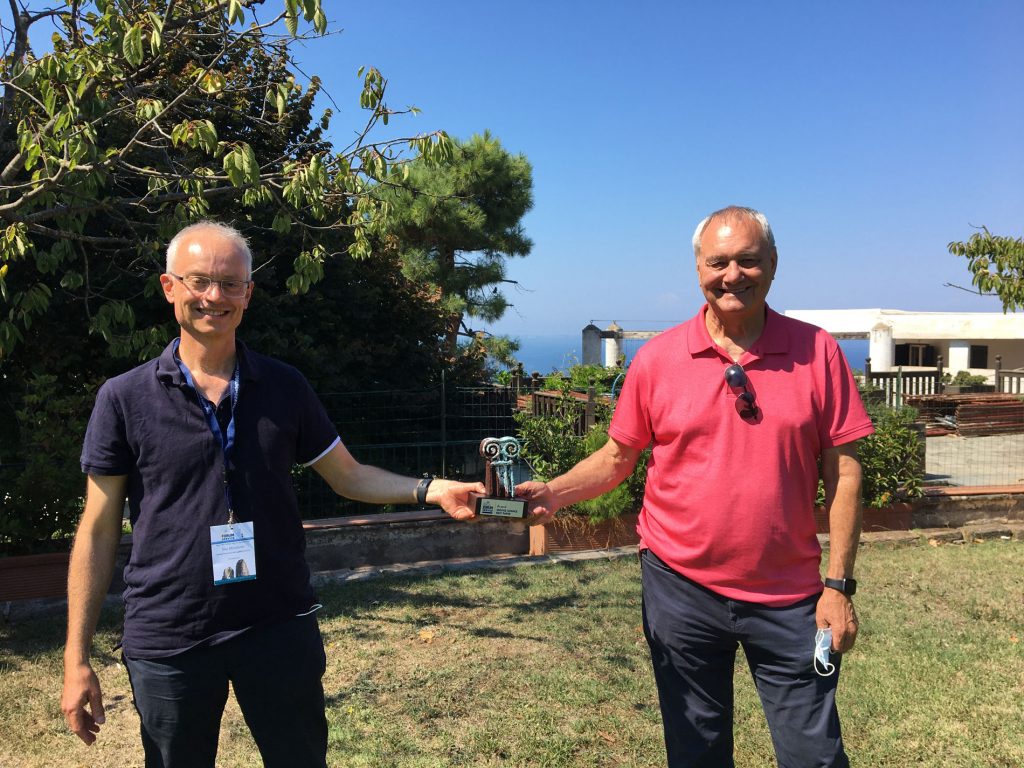Jürg Meierhofer, Christoph Heitz, and Frank Hannich won the Best Paper Award in the Service Science category at the Naples Forum on Service 2021 for their paper on optimising service value creation with smart, connected products. The paper was written as part of a DIZH Fellowship.
The paper describes a novel quantitative model for the design of the service interactions in the life cycle of customers using smart connected products – typically in industrial environments, i.e., in Industry 4.0 context – with the goal of optimising mutual service value creation for both the customer and the provider.
The paper can be downloaded here.
Jürg, congratulations on the Best Paper Award! What is the paper about and what are your findings?
First, I would like to thank Christoph Heitz for his inspiring thoughts for the quantitative model and Frank Hannich for embedding our model in the concept of the customer lifecycle!
Industry and economy in general are moving to a world where products get connected with the provider over the internet-of-things. Thus, providers and their customers stay in a closer relationship potentially over the entire lifecycle – from pre-sales until the end-of-life of a product – and can continuously exchange data. This contains many interesting opportunities for additional value creation for the customer and the provider overall and in the individual phases of the customer lifecycle. However, this also creates additional costs, which need to be traded off against the benefits. Our model provides a means to do this trade-off on a quantitative basis and to achieve optimised service designs.
How can your findings be used by others, for example by companies?
The model helps companies to design and optimise data-driven value creation along the customer lifecycle in a conscious way based on quantitative measures. Companies learn in which part of the lifecycle it is worth to invest in using the data for more value creation and in which not. This is especially important for manufacturers of high value products that are expected to create value over a longer time period, in particular also after the sales moment. Manufacturers selling high value machines to business customers across the world are a typical example. In the paper, we discuss use case of a provider of professional printers used in small advertising companies.
Why is it important to develop a new approach that quantitatively links customers and product life cycle design choices to value creation?
There is a lack of quantitative models in service value design. In practice, design decisions for service value creation are often taken based on heuristic or intuitive criteria or from a one-dimensional perspective. For example, a company may be convinced that they do their best if they are extremely customer-oriented and provide the best service over the entire lifecycle, sometimes even when it creates less value because the customer doesn’t really need it in some phases of the lifecycle. Or the opposite: a company may want to reduce costs and provide just standard service value over the entire lifecycle even if customers may desperately need it in some phases. Such approaches often unconsciously lead to sub-optimal designs, destroying value for the customer or the provider or both of them. By applying the new model, companies can do this choice based on quantitative criteria.
You wrote the paper as part of your DIZH fellowship. What is your fellowship about and how does the paper fit in?
In my DIZH fellowship, I investigate value creation in human-machine interactions in socio-technical systems. This contains several sub-topics. One of them is how value is created when humans and machines interact in a customer journey or lifecycle. This topic is of central importance in this paper. Another sub-topic covers quantitative models for the value of data. I am just about to submit a paper on data valuation models. Of course, these two topics are strongly interrelated.
About the Naples Forum on Service
The Naples Forum on Service is a biennial conference gathering researchers in the three pillars Service Science, Service-Dominant Logic, and Network Theory. These three pillars give the logo of the conference its shape, a symbolised ancient temple with three pillars, which is also replicated in the sculpture of the award. Researchers all across the world get together four days close to Naples to exchange about their research advancements. More information on the forum, the award and the other award categories can be found here.

